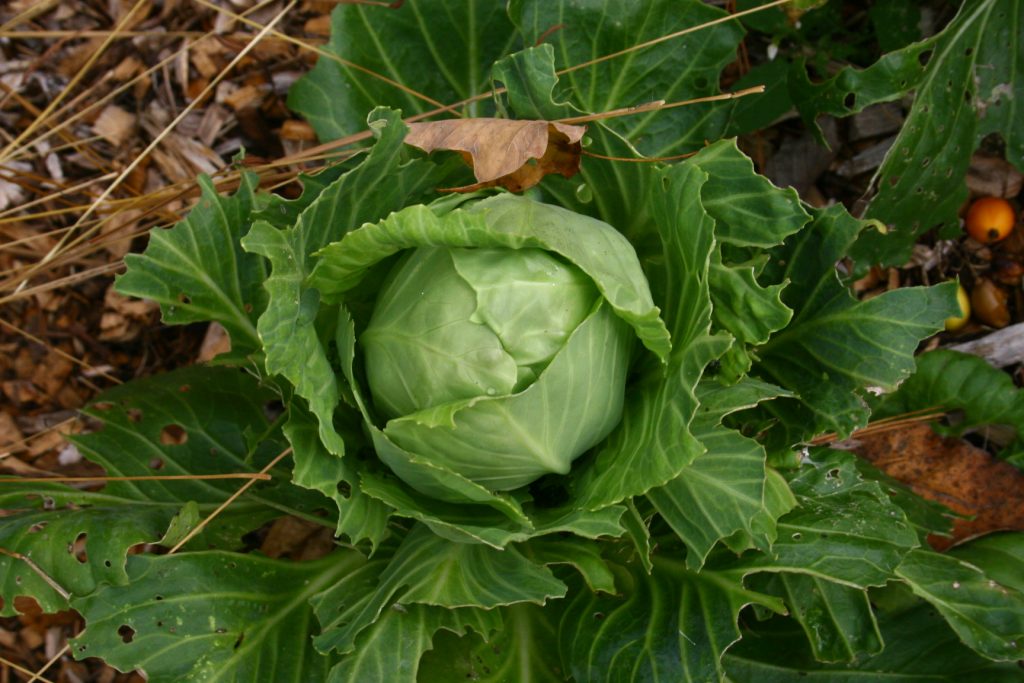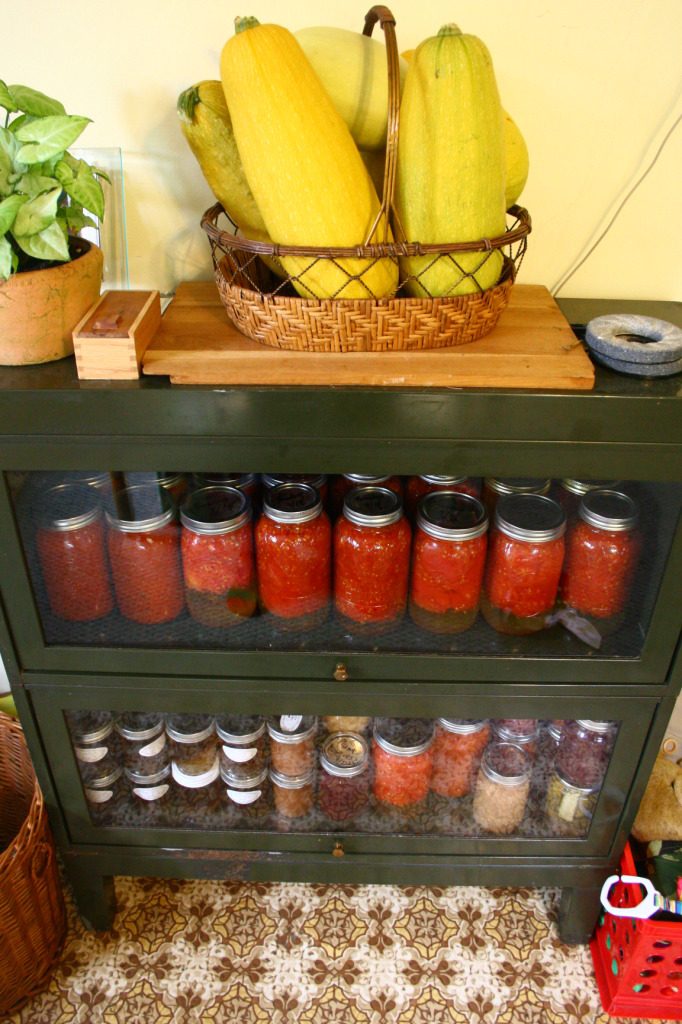
I’ve always been mildly obsessed with the idea of doing everything from scratch. Perhaps it was all those hours playing Oregon Trail as a middle schooler. (Anyone from my generation remember that?) Perhaps it was our games of make-believe in which we had to survive for long periods of time with little provision. Perhaps it was my limited girl-scout years during which I dreamed of cooking from scratch over the campfire.
Who knows what inspired my inner wanna-be pioneer woman. Whatever the cause, I’ve often asked myself, “Where would I get this item if I couldn’t just go to the store and buy it?”
In recent years, we’ve been trying more and more to make our backyard provide more of our food than the grocery store does. In reality, we have a long way to go. But we have made some positive strides towards that goal.
Those times, however, that I am able to feed our family almost entirely from our own food production are immensely satisfying to me. An egg frittata made with our hen’s eggs, our goat’s milk, and backyard green onions and asparagus is to me, far more than just a meal. It’s a huge accomplishment, representative of years of skill-learning, homestead establishment, and the fruit of daily labors. I eat that frittata with joy in my heart, knowing that so much work of our hands went into it.
Call me a weirdo, but I get a thrill out of it.
I want to make our backyard even more of a “grocery store” this year. Here’s what we’ve got so far, and what we’d like to do to make it a little closer to self-sufficient.
Produce
Each year, my husband plants and manages a large garden in which we grow potatoes, tomatoes, squash, peppers, radishes, beets, eggplants, cabbage, carrots, various greens, herbs cucumbers, attempted melons and corn, asparagus, green beans, and I can’t remember what else.
Garden foods that have lasted us almost all year when properly preserved or stored: tomatoes, potatoes, winter squash, green beans, greens, and some dried herbs. Foods we never have enough of: carrots, beets, peppers, and corn. We added some new beds this year to expand the quantity of food we grow.
As far as fruit, we have some old, out-of-shape fruit sources on the property: gnarly apple trees, an overgrown quince, a diseased elderberry, and wild blackberry bushes. Over the past couple of years, my husband has planted several new fruiting trees and shrubs: two apples, two peaches, a self-pollinating cherry, new elderberry from cuttings, blueberries, and raspberries. It will take several years for the fruit tree investment to pay off, but once it does, it will be lovely.
And lest we forget, there’s always foraging and partnerships with neighbors. We get more free greens than we grow, enjoy wild fruits from abandoned roadside trees, and gladly take extra fruits from friends and neighbors who have neither the time nor desire to gather and preserve them. Thank you to them!
Meat/Proteins
Chickens are a gateway animal, they say, and it’s true. We started with a small flock of birds for egg production, and have expanded this year with several more laying hens. We also acquired a couple of extra roosters in the mix, which will go in the stew pot since we learned to butcher birds last fall.
We also ventured into the world of meat rabbits this winter. To be fair, I’ve never eaten rabbit. But I suppose I’ll learn to! Rabbits, they say, give you the most lean protein per dollar spent on raising them. That’s why they’re a small-time meat production favorite. We currently have six baby rabbits that will be ready for processing in about 6-8 weeks. I’ll be honest- I’m nervous about the process- but I’m grateful for the provision for our family’s food.
We are also fortunate to live on a property bordering a fully stocked trout stream near a great fishing spot. We don’t always get a ton of fish, but it’s really nice when we do. We usually drop our other dinner plans and cook one fresh whenever my hubby returns with a few in his bucket.
As far as plant-based proteins, we happen to have black walnut and chestnut trees on our property, which are both a blessing and a big fat mess when all those nuts start dropping! 😉 The chestnut doesn’t have a neighboring tree close by to fertilize it, so we only get a small amount each year, and the walnuts are a pain to process, but hey- at least they’re there. My husband planted three hazelnut shrubs last spring, so we are hoping that those will be a more productive and manageable nut source in a couple years.
Dairy
We have a goat, of course! (If you’re new to the blog, you’ll have to read the story behind that one.) Our learning curve was steep, however, and I have to say that her milk production is now less than ideal because of our idiocy getting used to the whole process. Add to that the fact that my daughter drinks ALL of her milk every day, and I can’t say that she adds much to our self-sufficiency dreams. Ha-ha.
However, when she was in high production, we had enough to give our family milk for the week and make simple cheeses at the end of it. If we bred her again and did the milking thing right this time, I believe she could really provide most of our milk, cream, butter, and cheese needs. (Gotta love the high butterfat content of Nigerian Dwarf milk.)
Grains
This is one area that I have to say we don’t grow much of our own. We made our own cornmeal last year from our corn (success!) and have experimented with making flour out of curly dock seeds. But when it comes down to it, I just love good old bread. Thankfully, flour is relatively cheap, and a sourdough loaf is a delicious way to spend your pennies. I suppose I could learn to live without…. but fresh bread calls to me in such a way that it would be very difficult to do so!
Canned & Frozen Goods
We make our own! It’s easy to learn basic canning skills, and though the materials to do so may seem like a bit of an investment, they pay themselves off quickly if you’re preserving a lot. Also, many fruits, vegetables, and cooked meals are easily preserved in the freezer. Best of all, by preserving at home, you can control what goes into your convenience foods. I can pretty much guarantee that your homemade frozen pizza crust or rice casserole will be a heck of a lot healthier than the store-bought version.
I would be amiss if I did not mention (yet again) my new favorite preservation method… fermentation! Hop over to this post if you have no idea what I’m talking about or if it sounds nasty. Fermentation is easy, healthy, and surprisingly addicting.
And that’s pretty much it, folks. Of course, I buy personal items like t.p. and toothpaste from the grocery store- and there’s some of those things I can make at home- but most of them don’t come from the backyard. And I still haven’t gotten into the leaf-toilet-paper thing yet. 😉
What about you? What foods do you source at home instead of from the store?









Pingback: Want to produce more of your own food, but not sure where to start? Check out this post from They’re Not Our Goats. | Connie Fisk